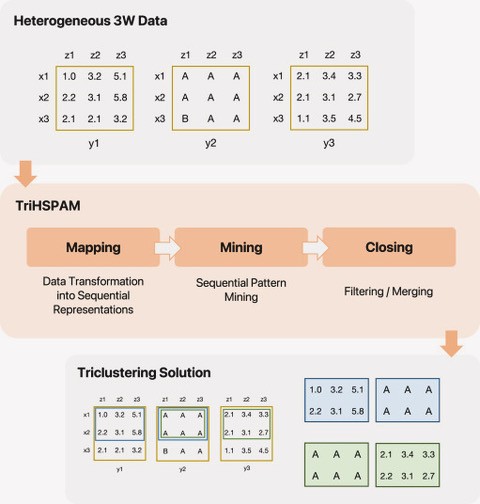Diogo F. Soares and Sara C. Madeira, LASIGE Integrated Researchers, published the paper “TriHSPAM: Triclustering heterogeneous longitudinal clinical data using sequential patterns” in Pattern Recognition Journal, a top-ranked journal in Artificial Intelligence and Pattern Recognition. The paper is co-authored by Rui Henriques from INESC-ID and Instituto Superior Técnico.
This research introduces TriHSPAM, a novel triclustering algorithm specifically designed to tackle the challenges of analyzing heterogeneous clinical data. Triclustering, identifying coherent patterns across subsets of patients, variables, and time points, has emerged as a powerful approach for studying longitudinal biomedical data. However, real-world clinical datasets often include mixed-type variables, missing values, and noisy records, which limit the applicability of existing methods.
TriHSPAM addresses these challenges by incorporating innovative principles to capture meaningful temporal dynamics in mixed-type, three-way data. It introduces a new merit function that evaluates the coherence of heterogeneous triclusters, guiding the search toward patterns that are statistically significant and robust to noise and sparsity. The algorithm is tailored to respect temporal constraints such as contiguity and misalignments, uncovering patterns that reflect real clinical trajectories.
Experimental validation on both synthetic and real-world datasets demonstrates the method’s ability to detect statistically significant and clinically meaningful temporal subspaces within complex longitudinal data. Notably, TriHSPAM proved effective in identifying patient subgroups and variable sets that evolve coherently over time, even in the presence of high noise levels and missing data, showcasing its robustness and flexibility.
The proposed method has the potential to advance knowledge discovery in biomedical research by providing more accurate and interpretable insights from complex, heterogeneous clinical datasets, ultimately supporting precision medicine and improved patient care.
The paper is available here.

